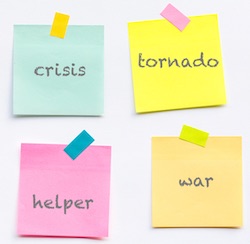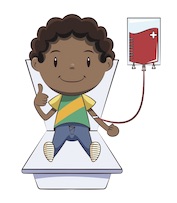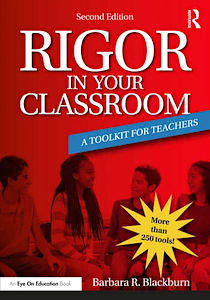Handling Tragedy and Crisis in the Classroom
By Barbara R. Blackburn

When 9/11 occurred, I faced a situation I was not expecting. I wanted my students to have the opportunity to share their feelings and ask questions, so I provided a time for open discussion. The second student who spoke asked a question that reflected a very controversial viewpoint. I stammered a bit, trying to respect the student and correct the misconception, but the damage was done.
The remaining students were so shocked and offended by the question, they shut down and the helpful conversation I imagined completely collapsed. That one unexpected student comment changed my classroom climate. I was never able to rebuild the trust between that student and her classmates, but I did take away a valuable and lasting lesson.
When writing is better than talking
What I learned is that classroom discussions, while critical, often may not be the best way to respond to a sensitive topic or situation.
As I explored other options, I discovered that if I use writing instead of talking, I could honor all students’ voices, give them an opportunity to process their feelings, and build a foundation for discussing events or content in a more structured manner. With writing, I provide students an opportunity for ownership while retaining some control over what is said. Here are some ways that I’ve learned can be effective.
Mind Dump
The first strategy I use is a mind dump. I ask students to write down everything that is in their head – how they feel, what they think, what they know or don’t know, on a sheet of paper. It’s their chance to take everything that is overwhelming them and get it out. There’s no limit – they can do part of a page or multiple pages.

Or I might use small groups and give them an opportunity to have some small-audience dialogue, using their papers as starting points. This also has the advantage of allowing students time to reflect before they talk. Then, I can lead a class discussion.
Post-It Notes for Sharing

Next, students move into small groups and use their individual words to build a group sentence or paragraph. Small groups join together in larger groups to share their work and provide feedback. Finally, students individually write a reflection, using the group work as a base. As a bonus, struggling students have a starting point and a bank of vocabulary they can use if they get stuck.
Vision Letters
A final activity I’ve found valuable is Vision Letters. These are most helpful after you and your students have discussed the event or issue and want to move toward talking about a solution.

For example, they may say that, although there was conflict at the beginning, after several months, world leaders negotiated a peaceful settlement. Additionally, although there were deaths, humanitarian groups were able to provide homes and medical care for many people.
Of course, these solutions will be shaped by the actual events. The likelihood is that there was no ideal solution, but the purpose of the letter is to try to find options that improve the situation. Students can share their letters with you or other students, and this can lead to essays proposing more detailed steps toward a resolution of the situation.
A final note
Prior to 9/11, my first choice when a national crisis happened was to allow an open discussion. What I discovered that day was that some situations are too emotional and controversial for a discussion with no limits. Using writing strategies to allow students to process and communicate how they feel provides an opportunity for students to share, while allowing me to put some boundaries on how that is shared.
One of my former graduate students used these strategies with a polarizing event and shared that his students’ parents were very appreciative. He lived in a politically divided community, and he was able to shield his students from a controversial conversation at school, while still allowing them to consider multiple perspectives.
No matter what you teach, if you are experiencing an emotional event, whether that might be the suicide of a student or an international war, writing can help you and your students react to the situation with less anxiety and more proactive reflection.
Feature image of paramedics: Shutterstock

Barbara is the author of Rigor in Your Classroom: A Toolkit for Teachers, Second Edition (Routledge/EOE, 2023) and many other books and articles about teaching and leadership. Visit her website.






























